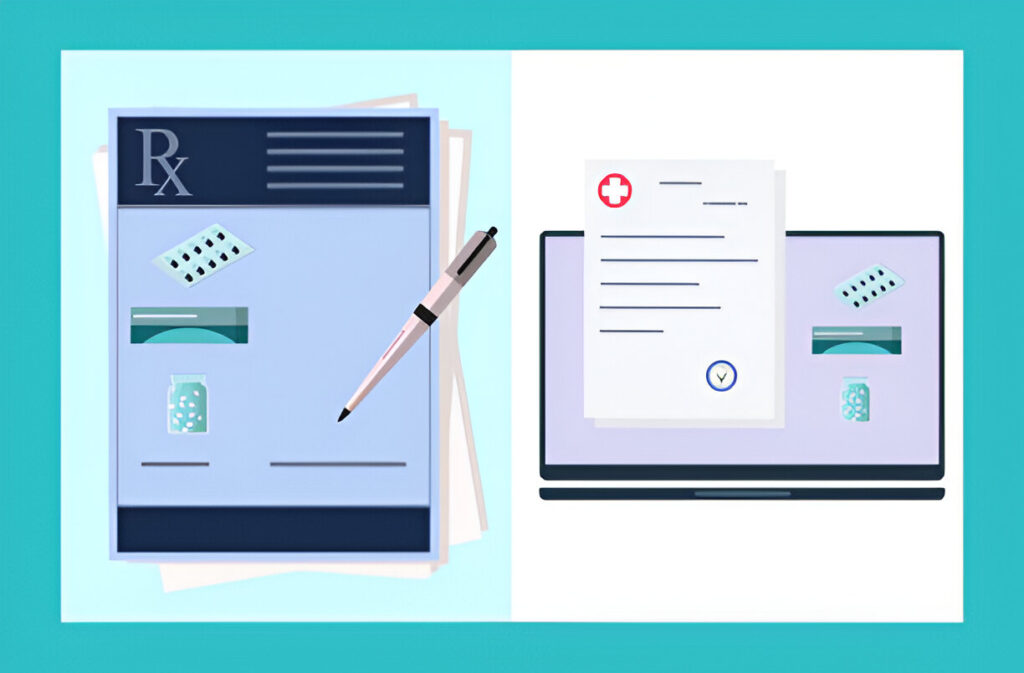The healthcare industry is shifting from traditional methods to medical software like electronic health records and AI-driven diagnostics. This evolution is essential to meet modern healthcare needs, offering undeniable benefits for professionals, administrators, and patients alike. Understanding this change is key to navigating the future of medicine.
The Inefficiencies of Traditional Methods
Paper Records Complicate Organization
Traditional paper-based record-keeping is one of the most significant pain points for modern healthcare systems. Patient files, test results, and prescriptions need to be physically stored, retrieved, and updated. This system is inherently prone to human error, including misfiling and loss of important data.
Studies show that 80% of healthcare errors are administrative in nature, often due to issues like illegible handwriting or misplaced charts. Paper records not only complicate organization but also slow down care delivery, impacting both patient outcomes and satisfaction.
Limited Collaboration Among Care Teams
Traditional methods often operate in silos. Without digital connectivity or data-sharing platforms, doctors, specialists, nurses, and administrative staff find it harder to collaborate effectively. Fax machines and manually forwarded reports leave room for delays, miscommunications, and redundancies.
This lack of seamless communication can be detrimental when time-sensitive care is required. For example, if a specialist cannot access a patient’s test results quickly, treatment delays become inevitable.
Data Analysis Is Virtually Non-Existent
Traditional methods offer minimal capacity for data analysis. While healthcare generates vast amounts of data through patient visits, lab results, and treatments, traditional methods lack the computational power to analyze them effectively. As a result, opportunities to spot trends, predict outcomes, and improve care processes are lost.
Why the Shift is Necessary
Improving Accuracy and Efficiency
Medical software, particularly electronic health records (EHR) systems, dramatically improves accuracy by eliminating manual data entry errors. Features like automated data input, spell-checking, and error alerts ensure that the information is accurate and consistent.
Modern systems streamline processes that would take much longer with traditional methods. For example, retrieving a patient’s medical history can be done in seconds instead of minutes or hours, allowing healthcare providers to focus on improving patient outcomes rather than searching for information.
Enhancing Communication
One of the standout advantages of medical software is its ability to improve communication across the entire care team. These platforms ensure clear communication, provide real-time updates, and significantly reduce the risk of miscommunication due to manual handovers or lost documents.
For example, if a patient undergoes imaging scans, the results can be instantly uploaded and shared with all relevant parties. A radiologist can annotate findings, a specialist can suggest follow-ups, and the primary care physician can use this information immediately to recommend the next course of action.
Data-Driven Healthcare Decisions
From chronic disease management to public health insights, medical software with integrated analytics tools can analyze large datasets to draw meaningful conclusions. This capability helps healthcare providers predict trends, identify risks, and make proactive decisions.
For instance, using predictive analysis, software can monitor patients with chronic conditions like diabetes to spot when their health metrics suggest worsening patterns. Early interventions driven by this data can significantly improve quality of life and reduce hospital admissions.
The Key Benefits of Medical Software
1. Streamlined Administrative Tasks
Scheduling appointments, processing insurance claims, and managing billing become effortless with medical software. Automation tools reduce the administrative burden on staff, allowing them to focus on patient care instead of paperwork. This results in faster service for patients and a reduced workload for healthcare workers.
2. Better Patient Experience
Medical software empowers patients by giving them more control over their healthcare. Patient portals provide access to medical histories, lab test results, and prescriptions, offering full transparency. They can also schedule appointments, request prescription refills, and even consult with healthcare providers online, all from the comfort of home.
3. Stronger Data Security
While traditional records are vulnerable to physical damage or theft, medical software offers robust protections. Encryption, multi-factor authentication, and access controls ensure that sensitive patient data is kept secure. Additionally, digital backups minimize the risk of losing records due to unforeseen events like fires or floods.
4. Improved Regulatory Compliance
Compliance with healthcare regulations (like HIPAA in the US) becomes much easier with medical software. Platforms are designed to adhere to legal standards with built-in compliance features, automated audit trails, and easy reporting functionalities. This can reduce the risk of costly violations for healthcare providers.
Challenges to Adoption (and How to Overcome Them)
Despite its clear advantages, some healthcare providers are slow to implement medical software due to various challenges:
- High Initial Costs
While upfront investments in software and training can be significant, the long-term savings in administrative costs and patient outcomes far outweigh the initial expenditure.
- Resistance to Change
Many healthcare professionals are accustomed to traditional methods. Providing adequate training and emphasizing the benefits of digital tools can ease the transition.
- Integration with Existing Systems
Seamlessly integrating new medical software with legacy systems can be challenging. Partnering with experienced vendors and consultants can ensure a smooth implementation process.
Conclusion
Now that you understand the key benefits and challenges of medical software, it’s clear that the future of healthcare lies in its adoption. As technology continues to advance, so does our ability to improve patient care and outcomes through digital tools.

